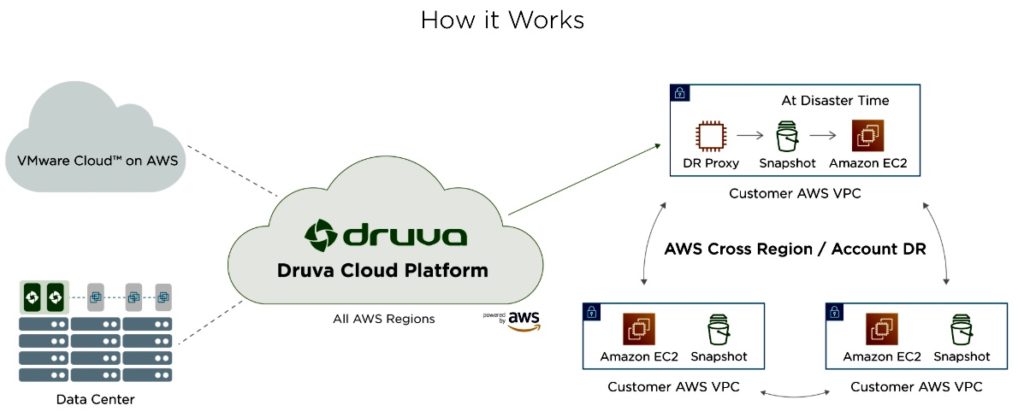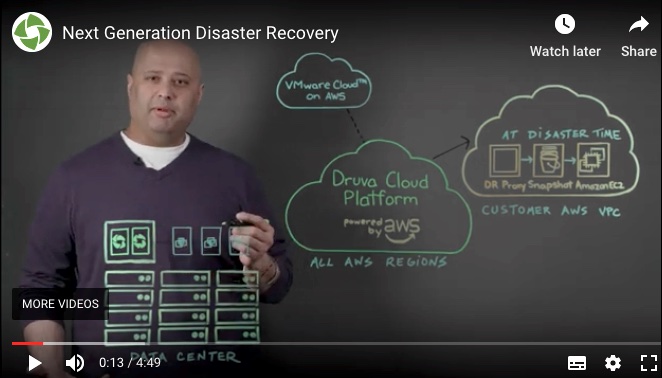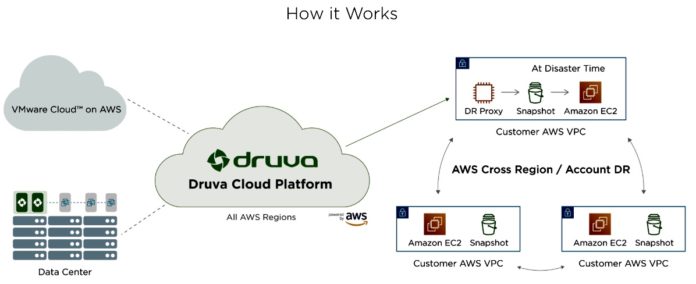Druva has added Disaster-Recovery-as-a-Service based on the AWS public cloud. This means customers can avoid the expense of a second DR site or subscribe to DR facilities for the first time.
Druva began life as an endpoint backup and file sharing company with its InSync product. From there it moved to protect remote and branch offices with Phoenix, and on to provide data management-as-a-service with the Druva Cloud Platform. Druva bought CloudRanger in June 2018 to get into backup and DR for AWS.
Phoenix can automatically failover and spin up virtual machines in the AWS public cloud but CloudRanger goes further and this has enabled Druva to offer AWS-based DRaaS.
It works like this. An on-premises virtual machine or one in the VMware Cloud on AWS is backed up to Druva’s cloud in AWS. They are converted to AWS EBS snapshots and stored in the customer’s virtual private cloud in AWS. The EBS snapshot can be spun up as an EC2 instance if the originating VM or VMs fail.
A diagram shows this scheme:

Customers can recover data to an on-premises VM (failback) or in the cloud (failover), across Amazon regions or accounts.
You can watch this Druva Cloud DR video for another spin on the scheme:

Druva’s on-demand elastic disaster recovery site in AWS automates runbook execution – a compilation of routine procedures – and the DR testing process.
Customers can use the service to replicate VMs, clone full VPCs, and move them across regions for test and development or for resiliency.
Cloud DRaaS, Phoenix, CloudRanger and InSync share a common management layer enabling customers to apply common policies and monitor data at a global level.
The new disaster recovery capabilities are generally available in Q2 2019.








